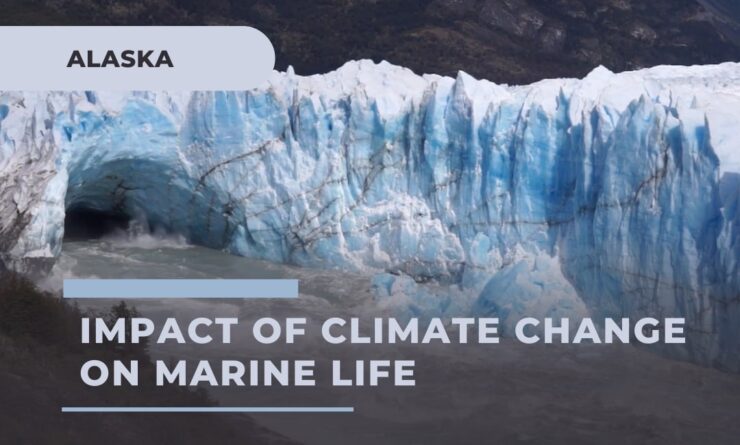Alaska’s marine environment is a treasure trove of biodiversity, teeming with countless species, some of which can’t be found anywhere else on the planet. These waters are home to an incredible array of creatures, from the smallest invertebrates to the largest marine mammals. However, this rich ecosystem is facing an unprecedented threat: climate change.
The significance of Alaska’s marine biodiversity can’t be understated. It not only underpins the health of ocean ecosystems but also provides vital resources for human communities. Marine life helps regulate climate, produces oxygen, and provides food and livelihoods for millions. The intricate web of life in Alaska’s waters is a testament to the strength and resilience of nature.
However, the rising tide of climate change threatens to unravel this delicate tapestry. The planet is warming at an alarming rate, and the effects are acutely felt in the polar regions. Rising temperatures, acidifying oceans, melting sea ice, and changes in ocean currents all pose significant risks to Alaska’s marine life. These challenges call for urgent action to understand, mitigate, and adapt to the impending changes.
Overview of Alaska’s Marine Life
The marine environments around Alaska, characterized by rugged coastlines, icy waters, and a unique combination of ocean currents, are a theater of life teeming with a broad diversity of species. It’s a world where the tiny plankton and the colossal whales share the stage, each playing their part in the performance of life.
Marine Mammals: The Titans of the Sea
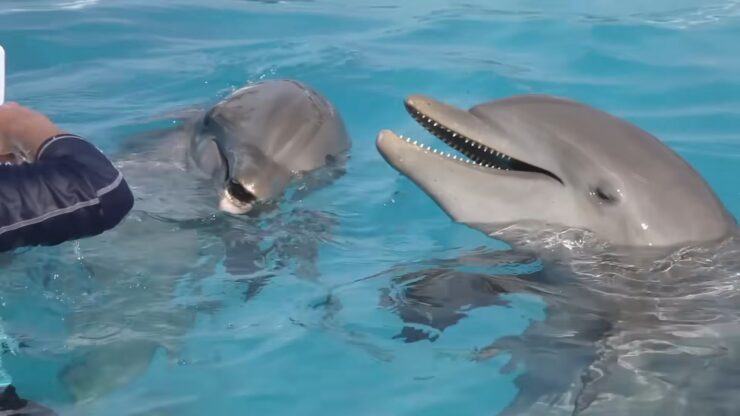
Among the most recognized of Alaska’s marine life are the marine mammals. These include several species of whales, like humpback whales, orcas, and belugas, each offering a spectacle of their own. Humpback whales, known for their acrobatic breaching and haunting songs, are seasonal visitors to Alaska, arriving in the summer to feast on the bounty of krill and small fish. Orcas, or killer whales, with their striking black and white coloration, patrol the waters in family groups, showcasing their remarkable hunting skills. Beluga whales, often called the canaries of the sea for their vocal behavior, are unique residents of Alaska’s Arctic waters.
Seals and sea lions are another vital group of marine mammals in Alaska. The waters are home to the largest species of sea lion, the Steller sea lion, and several types of seals, including harbor seals and ringed seals. These animals are essential players in the marine ecosystem, influencing the populations of their prey and serving as food for larger predators.
Fish: The Lifeblood of the Sea
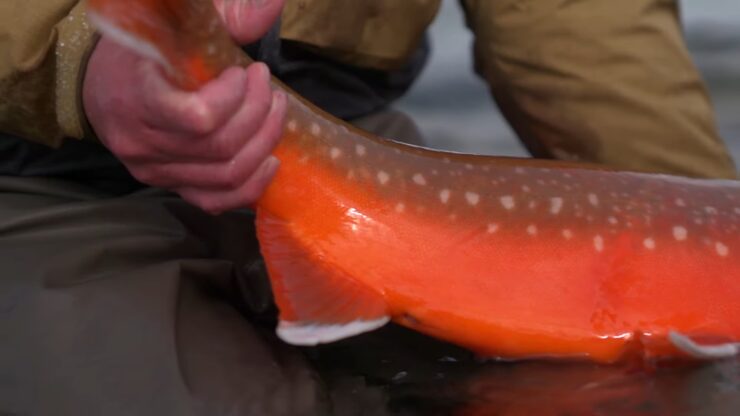
Fish are the lifeblood of Alaska’s marine ecosystems, their populations sustaining not only the ocean’s intricate food web but also the region’s robust fishing industry. The cold waters are teeming with a variety of fish, from the commercially important salmon, halibut, and pollock, to other species like Arctic char, rainbow trout, and Pacific cod.
Salmon, which undertake remarkable migrations from the ocean to freshwater streams to spawn, are a symbol of the region’s natural heritage. Five species of Pacific salmon — Chinook, coho, sockeye, pink, and chum — are found in Alaska. Their nutrient-rich eggs and carcasses provide a vital food source for a variety of terrestrial and aquatic species.
Halibut and pollock, too, are vital to the ecosystem and economy. Halibut, one of the largest flatfish in the world, are key predators and highly sought-after by commercial and recreational fishers. Pollock, meanwhile, form massive schools in Alaska’s waters, supporting the world’s largest single-species fishery.
Invertebrates: The Unsung Heroes
Invertebrates, though less visible than the massive marine mammals or the numerous fish, are the unsung heroes of Alaska’s marine ecosystems. These include a diverse array of organisms such as sea stars, urchins, mollusks, and crustaceans.
Sea stars and urchins play a significant role in regulating the ecosystem. For instance, sea stars, with their voracious appetites, help control the populations of mussels and barnacles, maintaining the balance in intertidal communities. Urchins, on the other hand, are notable for their ability to consume large quantities of kelp, affecting the structure and composition of kelp forests.
Mollusks, including clams, mussels, and octopuses, also add to the richness of Alaska’s marine life. They serve as an essential food source for a variety of species, and some, like the giant Pacific octopus — the largest species of octopus in the world — are notable predators in their own right.
In essence, each species, from the smallest invertebrate to the largest whale, contributes to the harmony of life in Alaska’s waters. They are all part of an intricate network of relationships — a web of life — that connects every creature to one another in the grand tapestry of Alaska’s marine ecosystems.
Climate Change and Rising Temperatures
Climate change, primarily driven by human activities like burning fossil fuels and deforestation, is causing global temperatures to rise. This phenomenon, known as global warming, is felt more acutely in the Arctic region, leading to numerous impacts on Alaska’s marine environment.
In recent decades, Alaska has experienced some of the most rapid warming on Earth, causing profound changes in its marine ecosystems. Rising sea temperatures affect the physical properties of water, such as its density and circulation patterns. These changes, in turn, influence the availability of nutrients and the productivity of marine life.
Warmer waters can affect the growth, reproduction, and survival of many marine species. For instance, changes in water temperature can disrupt the life cycles of fish and invertebrates, potentially leading to population declines. Warmer waters also facilitate the spread of invasive species and diseases, adding more pressure on native species.
Ocean Acidification
Ocean acidification refers to the ongoing decrease in the pH of the Earth’s oceans, caused primarily by the uptake of carbon dioxide (CO2) from the atmosphere. With increasing CO2 emissions from human activities, more CO2 is absorbed by the oceans, leading to their acidification. This process poses significant threats to marine life, particularly to shell-building organisms.
When CO2 dissolves in seawater, it reacts to form carbonic acid, which lowers the water’s pH, making it more acidic. This change in ocean chemistry reduces the availability of carbonate ions, which are building blocks for many marine organisms to form their shells and skeletons.
Ocean acidification is particularly concerning for Alaska’s marine organisms, such as shellfish and coral. Shellfish, including oysters, clams, and mussels, require carbonate ions to build their shells. A more acidic environment makes it harder for these creatures to grow and survive. Similarly, cold-water corals, which provide vital habitats for many marine species, are also threatened by acidification.
Melting Sea Ice
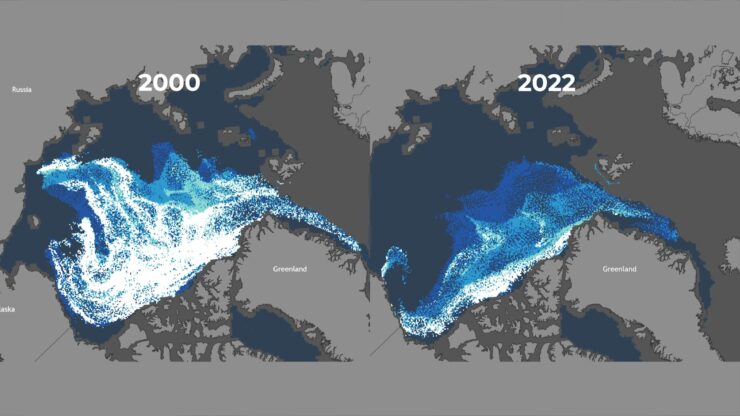
Climate change is leading to accelerated melting of sea ice in the Arctic region. This ice plays a crucial role in the Arctic ecosystem, providing habitats for various marine species and influencing oceanic and atmospheric conditions.
Sea ice is essential for species like polar bears and walruses, which depend on it for hunting, breeding, and resting. It also supports a unique community of ice-associated algae and invertebrates, which form the base of the Arctic food web. As the ice melts, these species lose their habitats, threatening their survival.
Reduced sea ice coverage also disrupts the Arctic food web. With less ice-associated algae, the number of zooplankton — tiny animals that feed on this algae — may decline, affecting fish and marine mammals that depend on them for food. Thus, the melting of sea ice could trigger cascading effects through the ecosystem.
Changes in Ocean Currents and Circulation
Climate change affects ocean currents and circulation patterns, which play a crucial role in regulating the Earth’s climate and distributing heat, nutrients, and marine life. These currents are driven by factors like temperature and salinity differences, both of which are influenced by climate change.
Altered currents and circulation patterns can lead to changes in nutrient availability, impacting the productivity of marine life. They can also affect the distribution and migration patterns of various marine species, which rely on currents to carry them to feeding and breeding grounds.
For instance, changes in currents could lead to warmer water being pushed further north, potentially disrupting the life cycles of species adapted to colder waters. Similarly, changes in the location or strength of currents could affect the migration routes of whales, seals, and fish, impacting their survival and reproduction.
Shifts in Species Distribution
Climate change is causing shifts in the distribution of marine species in Alaska. Many species are moving northward or into deeper waters in response to warming seas, altering the composition of marine communities.
Some of Alaska’s iconic species, like polar bears and walruses, are forced to change their behaviors and range due to melting sea ice. Fish species, too, are adjusting their distribution to find optimal temperature conditions, which can have significant effects on predator-prey dynamics and competition.
These shifts in species distribution can lead to changes in local ecosystems, affecting their function and resilience. It can also cause ‘trophic mismatch,’ where the timing of predator-prey interactions is disrupted, potentially leading to declines in populations.
Phenological Changes
Phenology — the study of the timing of natural events such as flowering, migration, and reproduction — is another critical aspect being influenced by climate change in marine ecosystems. Changes in climate can disrupt these crucial life cycle events, posing significant challenges for marine life.
In Alaska, researchers have observed phenological changes in several marine species. For instance, changes in sea temperature and ice conditions can affect the timing of reproduction and migration in marine mammals and birds. Similarly, shifts in the timing of plankton blooms, driven by climate change, can impact the food web.
These disruptions can have significant impacts on species survival and ecosystem functioning. If the timing of predator-prey interactions or other crucial ecological processes is altered, it can lead to reduced survival or reproductive success, affecting the health and diversity of the ecosystem.
Loss of Critical Habitats
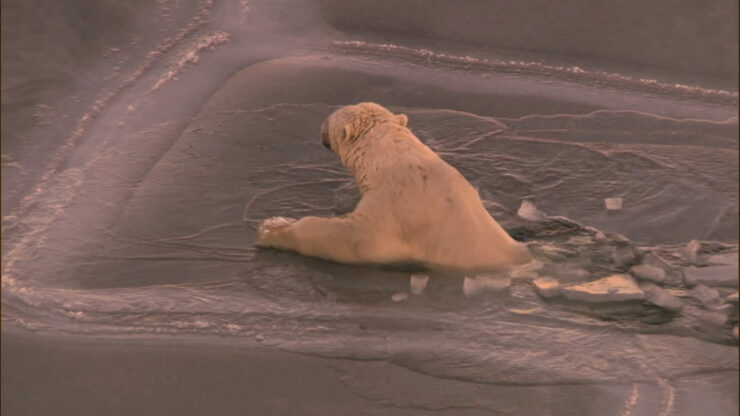
Climate change threatens critical habitats in Alaska’s marine environment, such as kelp forests, sea grass beds, and coastal wetlands. These ecosystems are vulnerable to changes in temperature, sea-level rise, and increased storm intensity, all of which are exacerbated by climate change.
For instance, kelp forests — underwater ecosystems teeming with biodiversity — are threatened by warmer waters and ocean acidification. Sea-level rise and storm surges can inundate coastal wetlands, affecting the species that rely on these habitats for feeding and breeding.
The loss of these habitats can have profound consequences on the biodiversity and productivity of Alaska’s marine ecosystems. They not only provide food and shelter for a multitude of species but also offer essential ecosystem services such as carbon storage and shoreline protection.
Impacts on Commercial Fisheries
Commercial fisheries are a vital part of Alaska’s economy, providing jobs and contributing significantly to the state’s export earnings. However, these fisheries are vulnerable to the impacts of climate change.
Climate change can affect fish stocks by altering their productivity, distribution, and quality. Changes in water temperature and ocean currents can affect fish growth and survival, as well as their distribution and migration patterns. Ocean acidification poses risks to shellfish fisheries, which are economically important in Alaska.
Adaptation strategies and management approaches are needed to mitigate the effects of climate change on fisheries. These could include flexible fishing quotas, diversification of catches, and investment in monitoring and research to improve our understanding of climate impacts on fisheries.
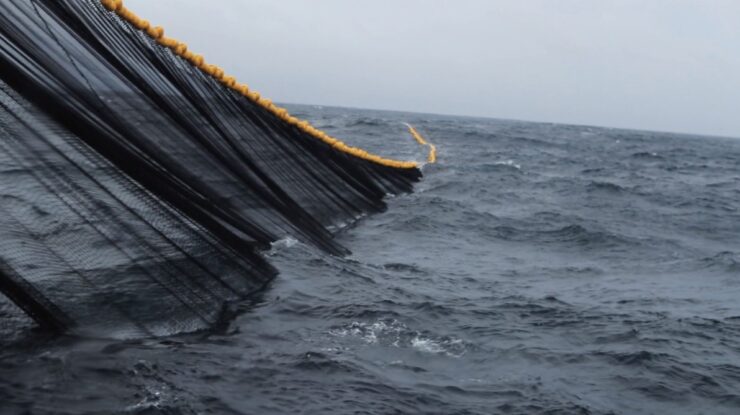
Indigenous Communities and Traditional Practices
Indigenous communities in Alaska have a deep connection with the ocean, relying on marine resources for subsistence, cultural practices, and economic activities. However, climate change poses significant challenges for these communities, affecting the availability and accessibility of traditional subsistence foods.
Changes in the distribution and abundance of marine species can affect subsistence harvests, impacting food security and nutrition. For instance, the decline in sea ice affects the hunting of marine mammals like seals and walruses, which are important traditional foods.
Indigenous communities also face cultural, social, and economic impacts due to climate change. These challenges highlight the need for adaptation strategies that are culturally sensitive and supportive of indigenous rights and practices.
Conservation and Management Efforts
Several conservation initiatives and management measures are in place to protect Alaska’s marine ecosystems. These include marine protected areas, species-specific conservation plans, and fisheries management policies. However, implementing effective conservation strategies in the face of climate change is a challenging task.
Climate change complicates conservation efforts by adding uncertainty and increasing the rate of environmental change. This calls for adaptive management approaches that can adjust based on new knowledge and changing conditions. These approaches must also consider the complex interactions between climate change and other human-induced stressors, such as fishing and pollution.
Potential solutions to safeguard Alaska’s unique marine life include enhancing marine protected areas, reducing other human-induced stressors, promoting sustainable fisheries management, and integrating climate change into conservation planning. These strategies, combined with continued research and monitoring, can help ensure the resilience of Alaska’s marine ecosystems.
Scientific Research and Monitoring
Scientific research and monitoring are crucial for understanding the impacts of climate change on Alaska’s marine life. They provide essential data for making informed decisions and developing effective conservation and management strategies.
Research helps elucidate the complex interactions between marine life and their changing environment, providing insights into species responses to climate change. Long-term monitoring programs track changes in marine ecosystems over time, detecting trends and shifts that could be indicative of climate change impacts.
The knowledge gained from research and monitoring is not only vital for marine conservation but also for the communities that rely on the ocean for their livelihoods and well-being. By understanding and anticipating the changes brought about by climate change, we can better prepare and adapt, safeguarding the future of Alaska’s unique marine life.
FAQ
1. What are some unique species found in Alaska’s marine environment?
Alaska’s marine ecosystem is home to a variety of unique and diverse species. Among the most recognized marine mammals are the humpback whales, orcas, beluga whales, seals, and sea lions. The region also supports a rich diversity of fish species such as salmon, halibut, and pollock. Numerous invertebrates, including sea stars, urchins, mollusks, and crustaceans, also inhabit Alaska’s waters.
2. How does climate change impact Alaska’s marine biodiversity?
Climate change affects Alaska’s marine biodiversity in several ways. Rising sea temperatures can affect the growth, reproduction, and survival of marine species. Ocean acidification threatens shell-building organisms like shellfish and corals. Melting sea ice disrupts the habitat of polar bears, walruses, and ice-associated algae and invertebrates. Changes in ocean currents can alter nutrient availability and species distribution. Moreover, climate change can cause shifts in species distribution and disrupt the timing of natural events like reproduction and migration.
3. How are commercial fisheries in Alaska affected by climate change?
Climate change impacts commercial fisheries in Alaska by affecting fish stocks’ productivity, distribution, and quality. Changes in water temperature and ocean currents can impact fish growth and survival, as well as their migration patterns. Ocean acidification poses risks to shellfish fisheries, potentially affecting the growth and survival of these creatures. Such changes can disrupt the fishing industry, leading to economic and social impacts.
4. What challenges do indigenous communities in Alaska face due to climate change?
Indigenous communities in Alaska are deeply connected with the marine environment, relying on it for subsistence, cultural practices, and economic activities. Climate change poses significant challenges for these communities, affecting the availability and accessibility of traditional subsistence foods. For instance, changes in the distribution and abundance of marine species and decline in sea ice affect the hunting of marine mammals, impacting food security and nutrition. Indigenous communities also face cultural, social, and economic impacts due to these changes.
5. What conservation efforts are in place to protect Alaska’s marine ecosystems from climate change?
Conservation initiatives include the establishment of marine protected areas, species-specific conservation plans, and fisheries management policies. However, the complexities introduced by climate change require adaptive management approaches that can adjust based on new knowledge and changing conditions. Strategies such as enhancing marine protected areas, reducing other human-induced stressors, promoting sustainable fisheries management, and integrating climate change into conservation planning are essential.
6. How does scientific research and monitoring help in managing the impacts of climate change on Alaska’s marine life?
Scientific research and monitoring are crucial in understanding the impacts of climate change and informing effective conservation and management strategies. They provide essential data for tracking changes in marine ecosystems, detecting trends, and understanding species’ responses to climate change. This knowledge is vital not only for marine conservation but also for the communities that rely on the ocean, helping them prepare for and adapt to the changes brought about by climate change.
7. How can individuals contribute to protecting Alaska’s marine biodiversity?
Individuals can contribute in several ways. They can support and participate in conservation efforts, reduce their carbon footprint, promote sustainable seafood choices, and spread awareness about the impacts of climate change on marine life. Education and advocacy are also powerful tools for effecting change and fostering a more sustainable relationship with our oceans.
Conclusion
In the frigid waters of Alaska, a vibrant symphony of life unfolds, featuring a cast of characters as diverse as they are fascinating. From the microscopic plankton to the massive blue whales, each species plays a unique role in maintaining the balance and health of Alaska’s marine ecosystems.
However, these ecosystems are now on the frontline of climate change, facing significant challenges from rising temperatures, ocean acidification, melting sea ice, changes in ocean currents and circulation, shifts in species distribution, phenological changes, and loss of critical habitats. The consequences of these changes are far-reaching, affecting not only marine life but also commercial fisheries, indigenous communities, and traditional practices.

